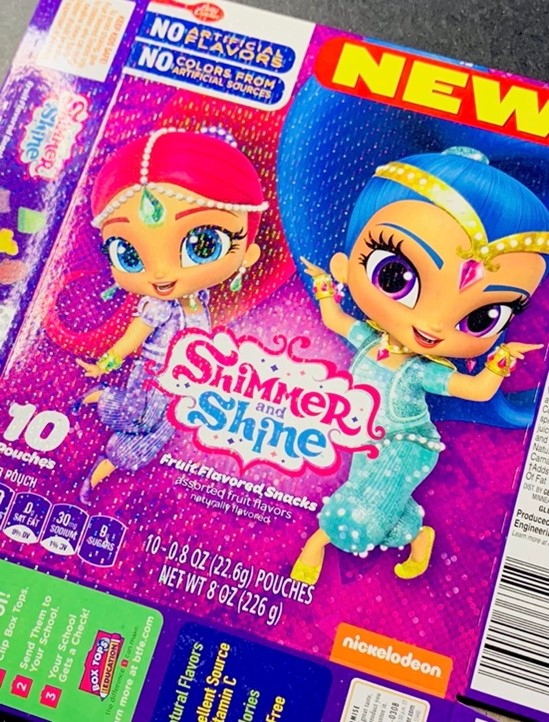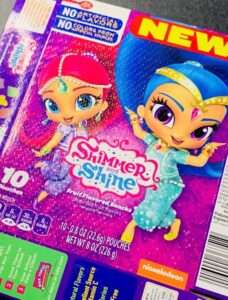
Although film casting, known as Cast and Cure™, is not a new print technology, many industry veterans still misunderstand how the process actually works. PostPress sat down with Tim Cain, president of Breit Technologies, to discuss Cast and Cure, the best applications, and the advantages and disadvantages of the process.
Cast and Cure has been available for a while now, but how does the process work?
Cast and Cure is a process in which users can create a decorative, clear holographic pattern on all types of printed substrates. First, a UV coating is applied to the substrate (labels, paper, paperboard or flexible plastic). Then the casting film is nipped in contact with the wet varnish. UV light passes through the casting film and cures the varnish while the film holds the varnish in the desired shape, much like a mold. The film then is delaminated and separated from the printed web or sheet and is carefully re-wound so it can be used again. The Cast and Cure process leaves behind a beautifully micro-embossed shape in the coating’s surface that can be holographic, matte or a texture.
What are some of the most popular applications for Cast and Cure?
 Cast and Cure is used in everything from liquor and beverage labels, printed collateral and direct mail to magazine and book covers, and even food and pharmaceutical cartons. Brand owners find the clear holographic patterns are an excellent way to grab the consumer’s attention when they are applied to a carton or label. Since Cast and Cure is clear and transparent, the printed graphics and text are not affected and remain readable by the consumer.
Cast and Cure is used in everything from liquor and beverage labels, printed collateral and direct mail to magazine and book covers, and even food and pharmaceutical cartons. Brand owners find the clear holographic patterns are an excellent way to grab the consumer’s attention when they are applied to a carton or label. Since Cast and Cure is clear and transparent, the printed graphics and text are not affected and remain readable by the consumer.
What is the best way to design for Cast and Cure?
Designing for holography in general can be tricky. For instance, when a holographic metalized PET (H-MPET) substrate is used for a carton or label, it most commonly requires designing multiple opaque ink layers to mask those areas where the holography should not bleed through. Since Cast and Cure is applied over the UV varnish, masking specific areas is not needed. Rather, the designer can create a spot varnish layer on the artwork where it should be applied.
Although bold, solid-colored backgrounds showcase Cast and Cure holographic effects the best, the process also can be used to create the illusion of movement over photographs and more busy backgrounds. Ultimately, however, there is no wrong way to use Cast and Cure holography or textured effects.
For most applications, Cast and Cure works best with a full coverage of the clear pattern over the printed image. It can be used in specific areas of a design, but full coverage provides the most impact and attention. In those cases, the designer needs to create a separate layer of solid black where the UV coating and casting film should be applied.
What are some of the benefits of Cast and Cure?
As discussed earlier, the Cast and Cure micro-embossed film works as a type of mold for the cured UV coating; as such, the film is not actually applied to the substrate, so it can be reused up to a dozen times (and sometimes even more). This provides a significant cost savings in terms of the amount of film needed for any given job. There is less spent on shipping fees, warehousing and waste disposal compared to other decorating methods, such as hot and cold foil. Moreover, since the film can be reused over and over, it is more sustainable than other processes.
What are the disadvantages?
Since Cast and Cure is applied to the surface of a UV coating, it reduces the effectiveness of any desired security features. Traditional security holograms are embedded sub-surface to make them difficult to copy, so Cast and Cure usually is not used solely for security.
There also are limitations to the type of substrates it can be applied to. Since it’s applied to a coating of UV ink, a coated, smooth stock works best. An uncoated or textured stock will absorb the coating and not allow the process to work as well.
What are some of the on-press challenges with Cast and Cure, and how can they be overcome?
The most common on-press challenge is poor tension control when winding the film back onto its roll. Once a wrinkle is introduced to the roll, it’s almost impossible to eliminate. Fortunately, if press operators follows proper tension guidelines, they will be able to start and splice the film without wrinkles, ensuring that the film can be reused over and over again.
Applying the UV coating correctly before the casting film is introduced also is essential for the successful application of Cast and Cure.
Are there any new applications for Cast & Cure?
Recently, the shrink sleeve and gift-wrap markets have started to embrace Cast and Cure, which is truly exciting. Brand owners with long-run jobs also are starting to use the technique, as the process can be applied now at close to 1,000 feet per minute.
We also are working to combine Cast and Cure with a monochrome inkjet system so a variable varnish application can be applied (such as unique security features, names, etc.) to individual printed pieces.
Tim Cain is the president of Breit Technologies, LLC, the global provider of Cast and Cure™, a low-cost, sustainable decorating printing process for paper, paperboard, pressure-sensitive labels, films and plastics, metal and shrink wrap. Breit also provides inline and offline equipment solutions, as well as stock and custom casting films. For more information, visit www.breit-tech.com.

